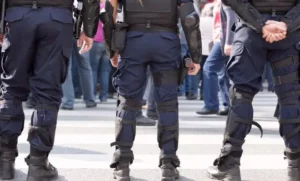In an era marked by increased globalization, the rise of technology, and shifting geopolitical dynamics, personal security has never been more critical. This is especially true for high-profile individuals like executives, celebrities, and dignitaries, who, due to their visibility and influence, often find themselves at risk. This is where the role of an executive protection agent becomes crucial.
However, the job of an executive protection agent isn’t as straightforward or glamorous as what we see in Hollywood movies. The role demands far more than physical prowess and combat skills. It requires a comprehensive understanding of security protocols, a sharp mind, resilience, and the ability to make quick decisions in high-stakes situations. Essentially, it’s about providing a secure environment where the protected individual, or “principal,” can carry on with their regular activities with as minimal disruption as possible.

This article delves into the role of executive protection agents, with a particular focus on high-risk situations. We’ll examine what their role entails, the skills and training they need, and how they navigate the complexities of ensuring safety in an increasingly unpredictable world. We’ll also take a look at some real-life instances where executive protection agents have played pivotal roles in high-risk situations. This deep dive will help illuminate the intricacies of this profession and offer some insights into how executive protection works in the face of serious threats.
Indeed, the job of an executive protection agent is about more than ‘protect and serve.’ It’s a delicate dance between vigilance and discretion, between action and anticipation, and between risk and assurance.
Understanding the Role of an Executive Protection Agent
When we hear the term “executive protection agent”, our minds often conjure up images of bulky men in black suits, equipped with high-tech gadgets, and performing adrenaline-fueled rescue operations. While such scenes make for engaging cinema, they are a far cry from the reality of the profession.
Basic Responsibilities
Before we dive into the specifics of handling high-risk situations, let’s first unravel the fundamental responsibilities.
Personal Security: At the heart of an agent’s role is ensuring the personal safety of the principal. This responsibility extends beyond physical safety and includes protecting the principal’s reputation, personal information, and property.
Planning and Coordination: Preparing for a principal’s movement from one location to another requires an intricate dance of logistics and planning. This could involve pre-surveying routes, coordinating with local authorities, and constantly updating plans in response to changes in the environment or itinerary.
Vigilance: Executive protection agents need to maintain a high level of alertness at all times. They must be observant and intuitive, detecting potential threats in the crowd, identifying suspicious behavior, and intercepting dangers before they manifest.
Emergency Response: Despite the best preventive measures, emergencies do occur. An agent’s role then shifts to responding to these situations swiftly and effectively, ensuring minimal harm to the principal.
Specialized Roles in High-Risk Situations
When the principal’s profile or the environment escalates the risk factor, the role of an executive protection agent intensifies.
Threat Assessment: In high-risk situations, agents conduct thorough threat assessments to understand the potential dangers that a principal could face. This process may include analyzing the political climate, assessing the threat from organized crime groups, and evaluating any specific threats made to the principal.
Enhanced Security Measures: To combat increased risks, agents might need to enforce stringent security measures. These could involve advanced surveillance systems, armored vehicles, or even additional support from specialized protection personnel.
Evacuation Plans: Agents must develop comprehensive evacuation plans for various scenarios, considering the principal’s safety above all.
Negotiation with Threat Actors: In extreme situations, the agents may find themselves negotiating with kidnappers or perpetrators of an attack. While this is an uncommon scenario, it is within the realm of possibilities, and agents need to be prepared for such instances.
In the following sections, we’ll delve deeper into the skills and training required for these high-risk situations, explore real-life case studies, and discuss the strategic approach to mitigating risks.
Skills and training required for high-risk scenarios

Ensuring someone’s safety, especially in high-risk situations, requires more than just physical strength and a keen eye. It demands a unique skill set, a level-headed temperament, and specialized training.
Essential Skills
Let’s look at the primary skills required by executive protection agents:
Situational Awareness: An agent must possess a heightened sense of awareness. This entails constantly scanning the environment, picking up on nuances, and anticipating potential threats.
Quick Decision Making: In high-risk scenarios, every second counts. Agents must make quick, sound decisions under pressure to protect their principal effectively.
Physical Fitness: The demands of the job require agents to be in peak physical condition. They need to be able to respond quickly and potentially engage in physical confrontations.
Communication: Effective communication is key. Agents must be able to convey information quickly and clearly to their team, the principal, and other parties involved.
Knowledge of Medical Aid: Basic knowledge of first aid is a must, but in high-risk situations, more advanced medical skills can be invaluable. This might involve dealing with trauma injuries or knowledge of emergency medical procedures.
Cultural Awareness: With principals often traveling internationally, understanding cultural norms and local customs can help agents blend in and operate more effectively.
Specialized Training
Beyond these fundamental skills, specialized training for high-risk situations forms an integral part of an agent’s preparation.
Defensive Driving: Agents often receive training in evasive and defensive driving techniques, helping them escape potentially dangerous situations.
Combat training: While the aim is always to avoid confrontation, sometimes it’s unavoidable. Training in self-defense, martial arts, and sometimes firearms is essential.
Crisis Management: Training in managing crises, such as natural disasters or terror attacks, can prove invaluable in high-risk situations.
Technological Tools: In today’s digital age, understanding and using advanced security technologies for surveillance, communication, and threat detection is crucial.
Advanced Medical Training: Agents often undergo training in advanced lifesaving techniques, including CPR, dealing with gunshot wounds, and handling other severe injuries.
Behavioral Analysis: Learning to analyze human behavior can help agents identify potential threats in a crowd or detect suspicious behavior.
These skills and training aren’t acquired overnight. They require commitment, a willingness to learn, and the ability to stay calm under pressure. In the next section, we’ll explore real-life case studies that demonstrate the role of executive protection agents in high-risk scenarios, and how the skills and training mentioned above come into play.
Case Studies

To further illustrate the role of executive protection agents in high-risk scenarios, let’s examine a couple of case studies. These stories highlight the breadth of skills needed, the vital importance of thorough planning, and the value of quick decision-making.
A. Case Study 1: Kidnapping Attempt on an International Businessman
In 2015, a high-profile international businessman was traveling in a politically unstable region when his executive protection team detected an imminent kidnapping threat. The threat assessment was based on local intelligence sources and an unusual pattern of behavior noted in a group of individuals near the businessman’s hotel.
Action Taken: The agents initiated an immediate evacuation plan, which had been meticulously prepared as part of their high-risk environment planning. They chose an alternate, less predictable route to the airport, coordinated with local authorities, and prepared for possible confrontations.
Result: The team was able to safely move the businessman from his hotel to the airport, avoiding the kidnapping attempt. Their preemptive actions, based on threat assessment and planning, ensured the principal’s safety.
Case Study 2: Protecting a Journalist in a War Zone
In 2018, an executive protection agent was tasked with protecting a journalist reporting from a war zone. The journalist was scheduled to interview a rebel leader, making the risk even more palpable.
Action Taken: The agent conducted a thorough threat assessment, liaised with local contacts for current intelligence, and set up contingency plans in case of an attack or abduction. He also worked closely with the journalist, briefing her on safety protocols and making sure she was equipped to respond to an emergency.
Result: The interview was carried out without any hitches. There were a few moments of tension when an armed group approached their location, but the agent’s quick thinking and immediate communication with the group leader ensured they could continue their work safely.
These cases illustrate the depth of planning, the range of skills, and the level of readiness required in high-risk scenarios. It’s clear that an executive protection agent’s role extends far beyond mere “bodyguard” duties – it is a multifaceted profession demanding a high degree of strategic thinking, adaptability, and courage. In the next section, we’ll discuss how these professionals strategize to mitigate risks and ensure their principal’s safety.
Mitigating Risks: The Strategic Approach

When dealing with high-risk scenarios, a purely reactive approach is not sufficient. Agents must adopt a strategic approach, proactively identifying potential threats and taking steps to mitigate them. Here’s how they do it:
Threat Assessment
The first step in risk mitigation is identifying the threats. Agents use a combination of local intelligence, public data, and information from the principal’s personal and professional networks to assess potential dangers. They evaluate the principal’s exposure level, considering factors like the political climate, cultural issues, and even the principal’s personality.
Planning and preparation
Once threats are identified, meticulous planning goes into preparing for them. This includes everything from creating secure travel routes and having backup plans to arranging secure accommodations and coordinating with local authorities. The goal is to control as many variables as possible, thus reducing opportunities for things to go wrong.
Training and Equipment
Ensuring that agents have the right training and equipment is a crucial part of risk mitigation. This includes physical fitness, combat and defense training, and knowledge of first aid and advanced medical techniques. In terms of equipment, this could range from armored vehicles to advanced communication devices and surveillance systems.
Constant Vigilance
Even with all the planning and preparation, constant vigilance is vital. Agents need to be alert to changes in their environment, ready to spot any potential threats, and prepared to act quickly if necessary.
Effective Communication
Communication plays a critical role in risk mitigation. Agents need to communicate effectively with their team, the principal, local authorities, and even potential threat actors in some cases. Clear and quick communication can often be the difference between a situation escalating or being effectively managed.
Post-Event Analysis
After any significant event or near miss, a thorough analysis is conducted to understand what happened, why it happened, and how it can be prevented in the future. This step ensures continuous learning and improvement in the approach to risk mitigation.
The Importance of Emotional Intelligence in High-Risk Situations

Often overlooked, emotional intelligence plays a pivotal role in the successful execution of an executive protection agent’s duties, especially in high-risk situations. So what is emotional intelligence, and why is it so crucial?
Emotional intelligence is the ability to understand, use, and manage your own emotions in positive ways to relieve stress, communicate effectively, empathize with others, overcome challenges, and defuse conflict.
Building trust with the principal
Understanding Emotions: Being able to read and understand the principal’s emotional state is crucial for an agent. A nervous principal might need reassurance, while an agitated principal might need space. Reacting appropriately to these emotional states helps build trust.
Expressing Empathy: Empathizing with the principal’s fears and concerns and validating their feelings can help maintain a strong professional relationship. It’s essential that the principal feel understood and supported by their protection agent.
Making Sound Decisions Under Pressure
Managing Own Emotions: High-risk situations can be stressful. An agent with high emotional intelligence can manage their stress levels, stay calm, and think clearly, which is critical for making sound decisions under pressure.
Reacting to Others: The ability to accurately read others’ emotions, such as recognizing aggression or nervousness in a crowd, can provide valuable information that might affect decision-making in high-risk scenarios.
Interacting with Others
Effective Communication: Emotional intelligence allows for better communication, as it helps in understanding how words and actions might affect others. This can be crucial when dealing with local authorities, potential threat actors, or even the principal’s professional and personal contacts.
Conflict Resolution: High emotional intelligence can help defuse potential conflicts. An agent might use their understanding of the other person’s perspective to de-escalate a situation, which could be vital in preventing a situation from escalating into violence.
In a nutshell, emotional intelligence equips executive protection agents with the tools to build strong relationships with their principals, make sound decisions under pressure, and interact effectively with others. This often-underestimated skill set is, in fact, a key component in navigating and mitigating high-risk situations effectively. It underlines the point that executive protection is not just about physical protection, but involves a broader set of skills, including a deep understanding of human emotions and behavior.
Final Thoughts
In our exploration of the role of an executive protection agent in high-risk situations, we’ve seen how these professionals operate within a complex matrix of skills, responsibilities, and duties. From their initial threat assessments and meticulous planning to their high-intensity responses in crisis situations, these agents embody a mix of mental acuity, physical preparedness, emotional intelligence, and quick decision-making skills.
Not merely bodyguards, these agents form a safety net for principals who operate in environments laden with risk, offering them the freedom to navigate their worlds with greater assurance. Their work not only encompasses the immediate physical safety of their principal but also extends to creating an environment where the principal can focus on their duties without the overbearing concern of personal safety.
In a high-risk situation, every decision counts. It is not only about brute force but also about negotiation, understanding, and strategy. The agent’s ultimate goal is not just to react to dangerous situations but to anticipate and avoid them.
Emotional intelligence, an often-overlooked trait in the security sector, plays a significant role here. The ability to understand and manage emotions, both personal and of others, can be a deciding factor in successfully navigating high-risk scenarios.
The work of executive protection agents often goes unseen, but without them, many individuals would be unable to perform their roles effectively. As risk landscapes continue to evolve, the work of these agents will remain crucial, their roles continuously adapting to meet new challenges and maintain the safety of those they protect.

